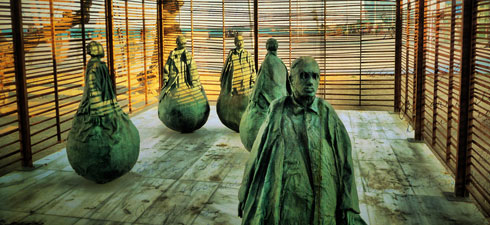“Wanted: artists & innovators for urban renewal.” For several years now, that seems to be the gist of many urban renewal efforts: viz. drawing on creative elements like art, culture, music and design to build up a new urban image, to attract artists, young professionals and innovative entrepreneurs.
Many a city has recently taken or is currently trying to take this approach: the most oft-cited examples are Seattle, Austin, Barcelona and Bilbao, but Glasgow, Edinburgh, Denver, Pittsburgh and Lille are also noteworthy illustrations. And big cities that have recently been pushing aggressive cultural policies along these lines include Toronto and Berlin.
Colossal redevelopment or micro-policies?
The strategies and policies adopted on this front vary widely, often including a mix of measures ranging from infrastructure improvements to cultural and educational programmes, from the big landmark museum to a series of small-scale street-based events, festivals and concerts. Broadly speaking, two very different strategies are emerging: On the one hand we have cities that tend to invest chiefly in infrastructure, in colossal redevelopment projects and mammoth events, witness a number of Spanish cities, including Barcelona and Bilbao. The latter, with its famed Guggenheim museum, which draws nearly a million visitors a year, has succeeded in metamorphosing from a waning industrial centre into a hotspot of international cultural tourism.
On the other hand, some cities opt for diffuse micro-policies operating chiefly on the social and cultural plane, often offering tax incentives for artists and educational/cultural programmes targeting children and the public at large. One case in point is Lille, which in the late 1970s began its transformation from an ageing industrial city into a vibrant, dynamic cultural centre by means of educational programmes at schools and universities, but also cultural programmes involving dozens of associations, non-profits, companies and shops. Plus a generous system of grants accorded every year to artistic projects and all sorts of activities and events. Suffice it to point out that Lille now allots 15 per cent of its municipal budget to the promotion and production of cultural activities, which makes it one of the liveliest cultural hotspots in present-day Europe.
Urban renewal efforts require careful stewardship
But most of the media hype lately has focussed on Berlin, a city much in vogue which, just a few years ago, set up a system of tax breaks and benefits for artists and organisations working in the cultural sector. These economic incentives, backed up by rock-solid social policies and a large stock of available low-cost housing and working space, have proved a magnet for creative minds the world over in search of a place to live and work where they won’t have to worry about making ends meet – as they would in London or New York. So it is that Berlin has slowly but surely built up an international reputation as a “cool” city, attracting plenty of young professionals and innovative entrepreneurs as well.
So does that mean the arts are a failproof recipe for a miraculous urban renaissance? By no means. Like any other policy, to be effective, urban renewal efforts require careful stewardship, constancy, balance and due regard for local particularities and social impacts. To wit, everyone’s talking about Bilbao these days, but no-one mentions the great many abortive attempts to emulate its example. Nor is there any mention of the fact that the rehabilitation of some cities like Barcelona has driven the poorest residents of the city centre out to the outskirts of town, sometimes bringing social conflicts and upheavals in train.
Culture - a packet tourist attractions?
So a single opera house, museum or festival will not do the trick. The main thing needful is a mentality, an animating spirit, a way of seeing and interpreting art, culture and creativity not as objects to stick in a showcase and sell for profit, but as a world of people, ideas, production and innovation. Urban renewal requires a community that generates ideas, that enkindles and engages in discussion, that faces and grapples with current-day issues, that spurs activity, curiosity, and stimulates not only artists, but also professionals, entrepreneurs, students, the man in the street. What is needed is a non-linear, accommodating mindset that is willing to put with a measure of mayhem, confusion, chaos, even inefficiency.
This is the prevailing spirit of cities that succeed in using culture as a lever for economic and social development. And it may well be the spirit sorely lacking today in Italy: a country endowed with marvellous cities and tremendous resources, but that continues to regard culture as a packet of consumer goods and tourist attractions.
Was this article useful? If so we are delighted!
It is freely available because we believe that the right to free and independent information is essential for democracy. But this right is not guaranteed forever, and independence comes at a cost. We need your support in order to continue publishing independent, multilingual news for all Europeans.
Discover our subscription offers and their exclusive benefits and become a member of our community now!












